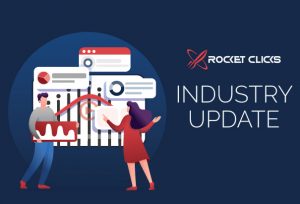The allure of long-tail keywords is so appealing for many advertisers: hyper-specificity, improved conversion rates, absurdly low costs; what’s not to love?
In paid search marketing, we’ve come to not only embrace “long-tail” coverage, but have devised holistic strategies with the idea that our target customer is found in those obscure, little-known three-word phrases that receive maybe 40 searches each month. We sift through search-query reports hoping to find that “golden ticket” keyword converting at an absurdly low cost-per-acquisition that will forever change the account.
Unfortunately, focusing solely on the long-tail is a misguided approach in the ever-growing search to find that ideal customer. Doing so ignores a powerfully large percentage of search queries each month that your target is searching for to begin the “buyer’s journey.”
I’m here today to shed some light on the dark-side that is the “head” terms (i.e. the ultra-competitive, cost sinkhole keywords that are supposedly killing your budget and not producing adequate return on your investment). For the budget-conscious, it’s time to stop thinking of your paid advertising as silos and embrace the beauty of the top of funnel keywords.
Traffic and Remarketing Opportunities
Head terms are expensive for a reason: they’re the broadest queries that are susceptible to the most amount of competition. This significant barrier to entry can be a discouraging fact to those entering the space and is unfortunately one of the harsh realities of advertising on Google.
However, considering that “awareness” phase keywords are 80% likelier to receive a click than “purchase” queries, simply generating the traffic can ultimately be beneficial in the long run with the help of remarketing. The sheer volume of traffic at your disposal for introductory terms – “office furniture,” “wireless headphones,” “running shoes,” – opens a multitude of enhanced messaging options. Search lists, display, and dynamic feed remarketing are all at your disposal and increasing the likelihood of an individual revisiting your brand’s unique selling point, especially for those in a longer purchasing cycle, is an opportunity cost that cannot be ignored.
If you’ve followed my previous blog installment, your campaigns should be in excellent standing to remarket to the hundreds, if not thousands, of users generated from these terms.
Messaging Efficacy and Statistical Significance
I manage the account of a large online retailer where we’ve separated a key head-term into its own campaign due to its traffic volume; weekly clicks and impressions of 700 and 10,000 respectively aren’t uncommon. Conversion rates fluctuate, but what remains consistent is the level of traffic – making this the most critical testing ground for new messaging.
In a matter of days, we can prove a statistically significant winning ad test with a 95% confidence level. This process takes weeks (sometimes months) with our long-tail keywords where the traffic just isn’t as prevalent. Having this option has proven to be hugely beneficial not just for this campaign, but for every other ad group in the account as well.
As a team, we constantly review the ads, gleaning insights to utilize elsewhere in the account. Essentially, we conduct customer case studies on a bi-weekly basis, furthering our understanding of our target customer with each new headline or callout in the description.
By separating these costly terms into individual campaigns, we’re able to effectively control spend while still regularly testing new messaging strategies and recapturing the traffic through other channels.
Sales Still Occur at This Level!
One of the most common pitfalls in online advertising is making assumptions about your customer’s purchasing behavior. Trapping oneself in the mindset that a customer’s buying journey occurs linearly along a precise buying funnel is a dangerous assumption that can lead to missed opportunities.
As consumers, we’re conditioned to follow a “path of least resistance.” We will happily ditch whatever plan we had in mind for the quickest and most efficient solution to our problems.
It doesn’t matter the phase of our buying cycle or information we’ve consumed along the journey. If a potential customer begins with a single keyword search and sees an ad outlining the exact benefit statements necessary to solve his or her issue, the journey stops and a sale occurs.
The campaign example outlined in the section above frequently lands among the top five top revenue generating campaigns. While our cost-per-conversion oftentimes appears on the surface to be sub-optimal, the return on investment from returning users in our branded and dynamic remarketing campaigns more than alleviates the high cost of our head terms.
Completely ignoring these keywords is truly proclaiming you don’t understand your customer.





















